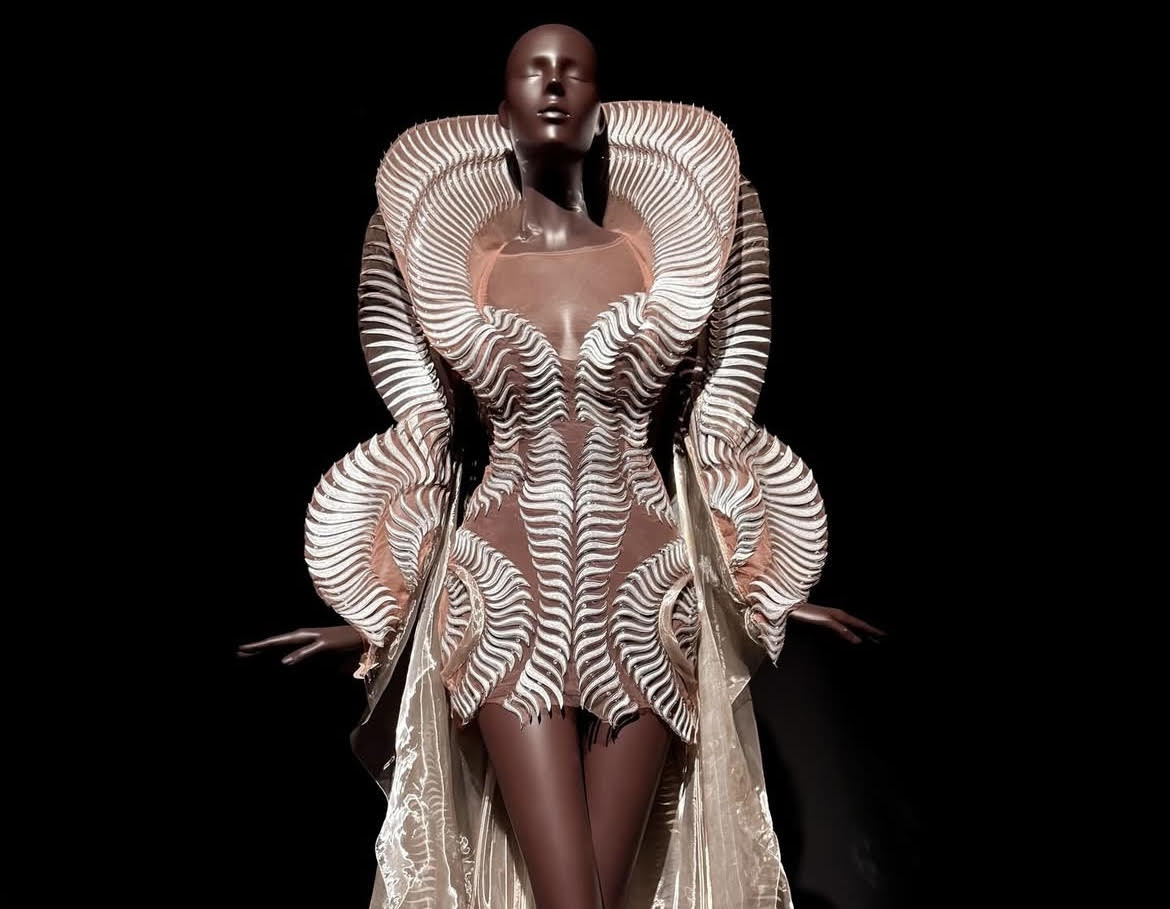Photo Credits: Iris Van Herpen/ Reproduction
There are garments that cover the body, and then there are those that uncover the soul. Sculpting the Senses, the first Asian retrospective dedicated to Iris van Herpen, opened on March 15, 2025, at Singapore’s ArtScience Museum, and with it, a new axis in the way we think about fashion, form, and flesh was quietly, immaculately drawn. Over 140 creations—dresses, accessories, relics of future pasts—hover in the white stillness of the galleries, not as fashion artifacts, but as living phenomena.
This is not an exhibition. It is an exhalation.
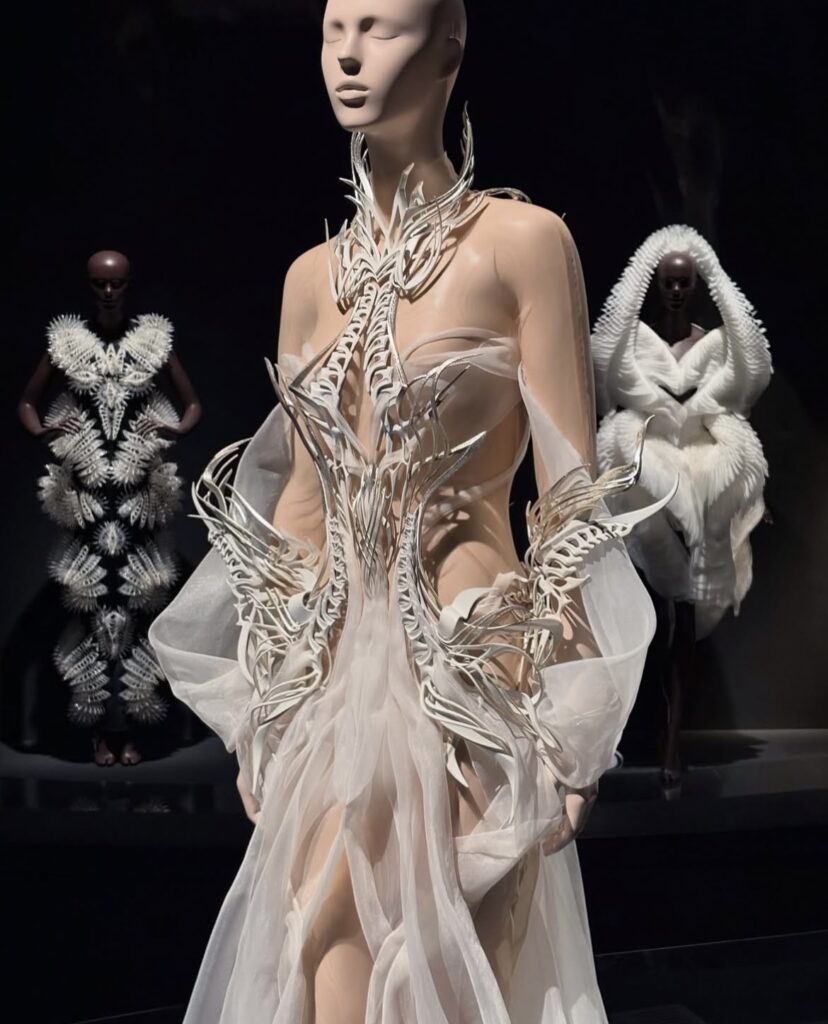
Photo Credits: Iris Van Herpen/ Reproduction
Iris van Herpen does not design clothing. She conducts matter. Her haute couture is not sewn—it is sculpted, printed, encoded. Each look in Sculpting the Senses invites the viewer not to see, but to feel; not to admire, but to enter. She uses silicone like watercolor, organza like bone, 3D-printed filaments like strands of thought. Her silhouettes are echoes of marine fossils, neural pathways, orchid petals and meteoric spirals. In her world, the dress is no longer garment—it is topography. A skin that thinks.
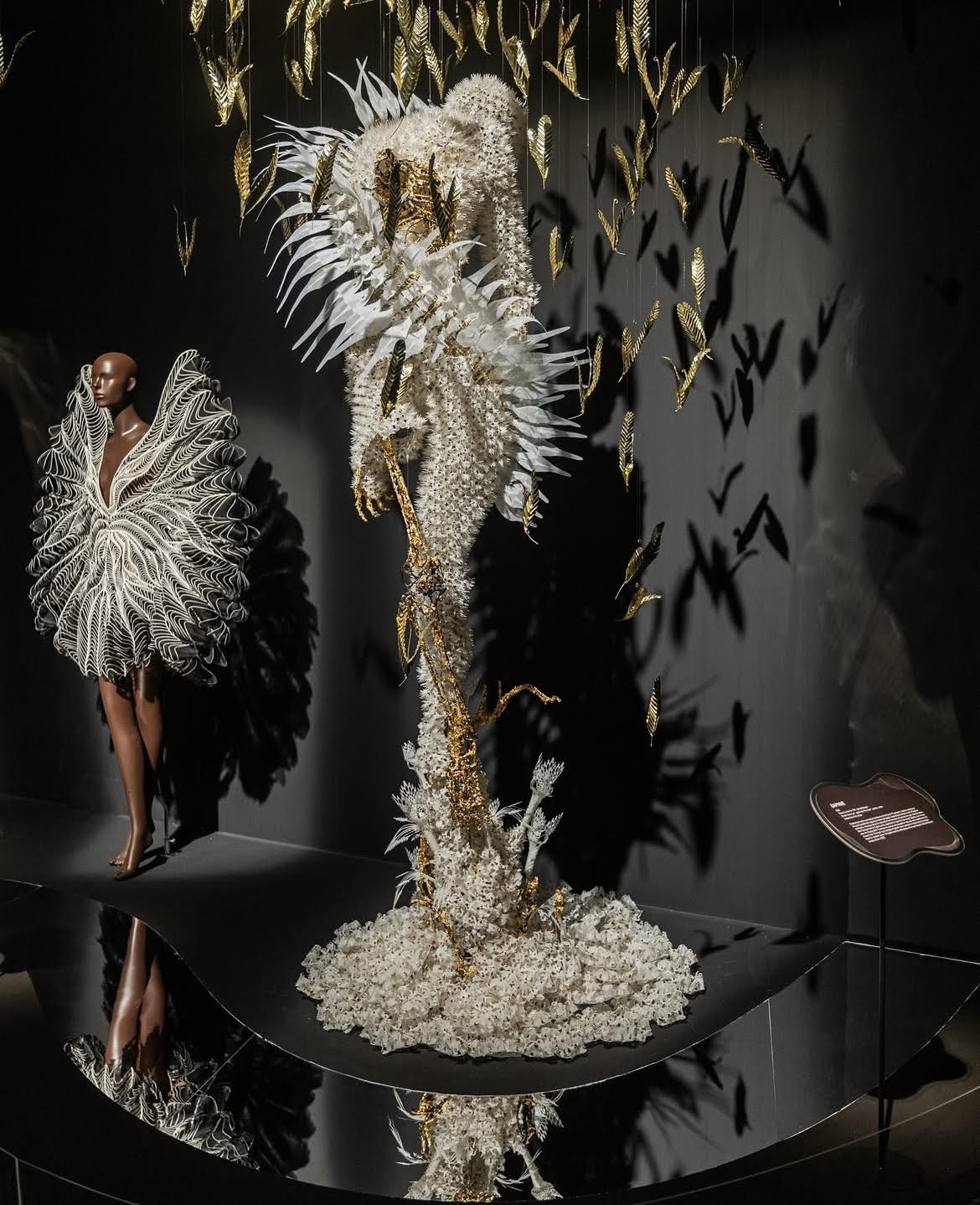
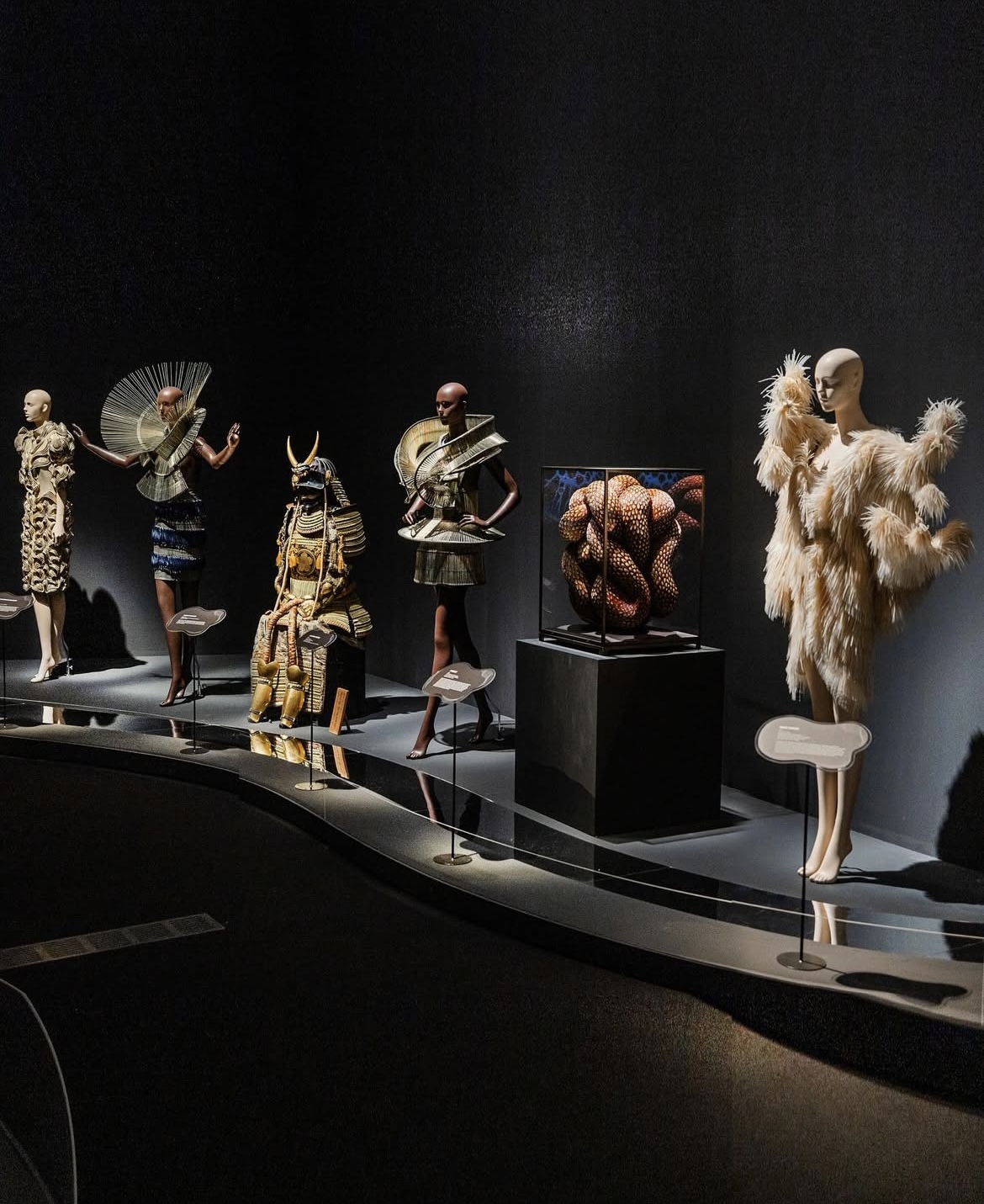
Photo Credits: Iris Van Herpen/ Reproduction
The exhibition unfolds across nine sensorial chapters, each dissolving the boundary between body and cosmos. In one, garments mimic the flow of synaptic electricity. In another, they recall the folding of wings, the geometry of gills. These are not metaphors; they are translations—living bridges between biology and design.
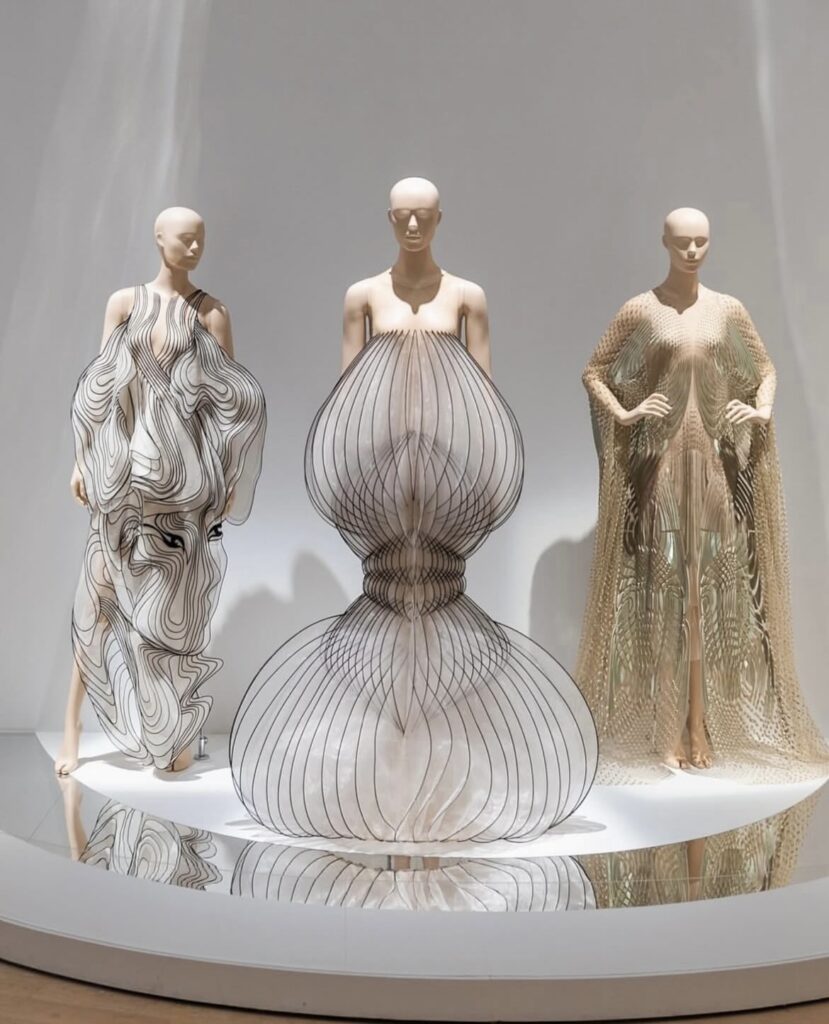
Photo Credits: Iris Van Herpen/ Reproduction
Placed in dialogue with contemporary artworks, natural history specimens, and fossils of creatures who lived before language, Van Herpen’s creations feel less like couture and more like sacred relics from a civilization yet to be born. A coral skeleton leans toward a laser-cut bodice. A calcified vertebra mirrors a molded hip cage. Suddenly, what we wear is no longer separate from what we are. Suddenly, fashion is a form of remembering.
The now-iconic Skeleton Dress, with its exoskeletal lines inspired by artist Heishiro Ishino, occupies one chamber like a sentinel of the future. Nearby, the Crystallisation look—part architecture, part apparition—reveals the delicate violence of water caught mid-transformation. These aren’t costumes. They are questions.

Photo Credits: Iris Van Herpen/ Reproduction
And perhaps that is what Van Herpen does best: she doesn’t answer. She proposes. Through each curve, each filament, each suspended stitch, she reminds us that fashion can be both soft and cerebral, both fluid and structural, both of this Earth and utterly alien.
The title of the exhibition is not incidental. Sculpting the Senses is exactly what her work does. It bends sight. It interrupts touch. It asks the viewer to taste light, to hear texture. It is a reclamation of the body as interface—not a mannequin, but a terrain. She sees the human not as static muse, but as an evolving ecosystem, in conversation with physics, with coral reefs, with clouds.
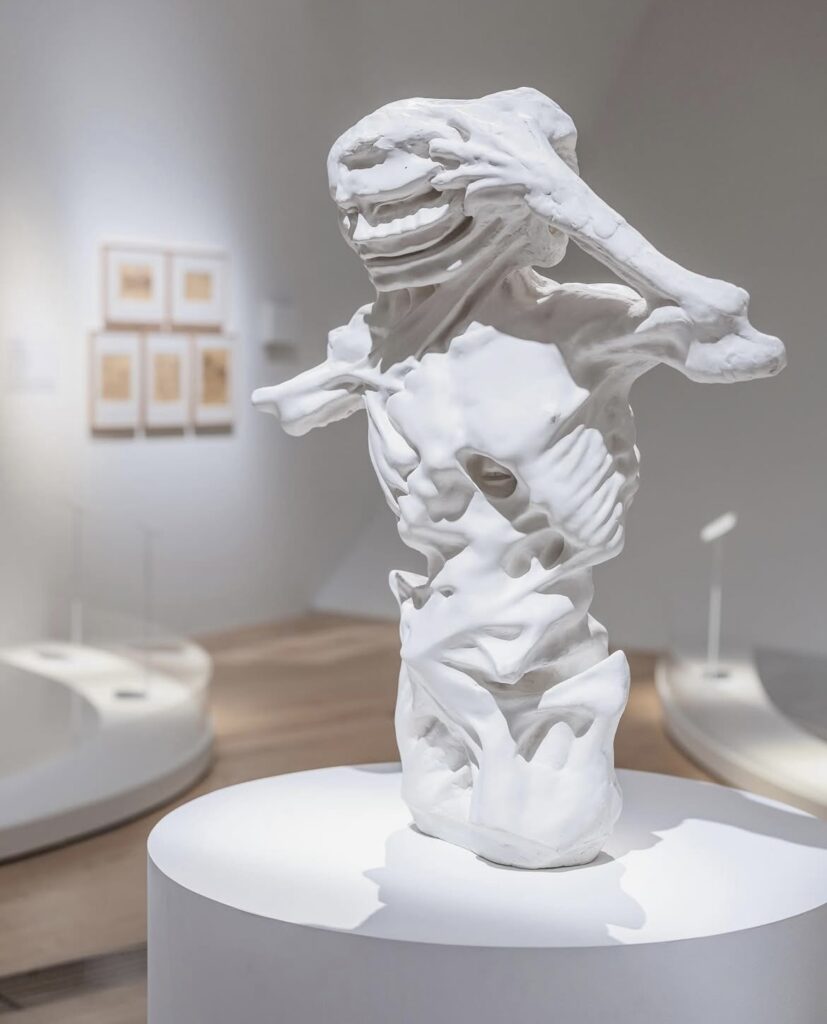
Photo Credits: Iris Van Herpen/ Reproduction
This is the first time Iris van Herpen’s work appears in Asia. That it takes place within the luminous geometry of the ArtScience Museum feels preordained. It is a temple of light and shadow, a place where science is not separate from feeling, and where fashion is not lesser than thought.
Her exhibition runs until August 25, 2025. But its effects will ripple long after. To walk through these galleries is to abandon the binary of body and mind, fabric and form, nature and machine. It is to witness couture become consciousness.
Here, fashion is not what dresses the body. It is what reveals the soul.
